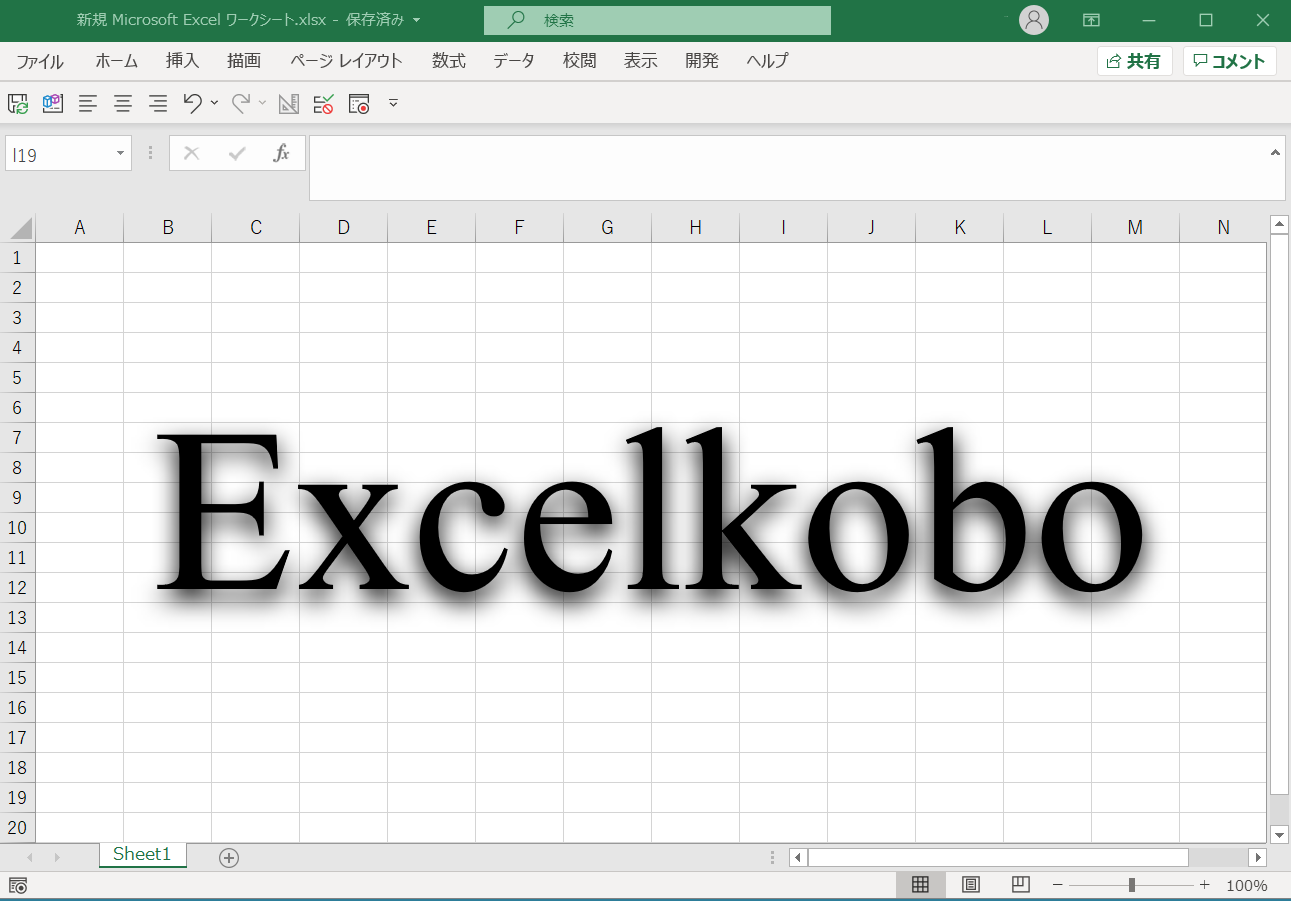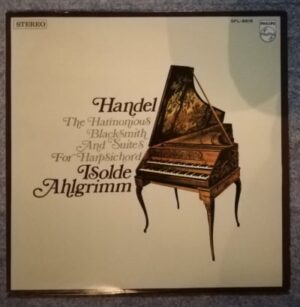
Handel’s Four Suites / Isolde Ahlgrimm
I have also Handel’s complete Suites of Isolde Ahlgrimm, but after all, this old analog performance is good. What’s great is the elegant tone of original Luckers. I think this record was the first time I heard the historical harpsichord sound when the performance of original instruments was rare at that time. Every piece is played lightly without repeating, but that is also good.
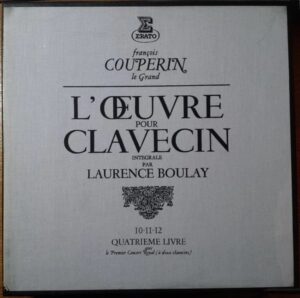
The Complete Works of Couperin / Laurence Bouley
I usually listen to Christophe Rousset’s performances of Couperin’s complete works, but I still remember this analog recording by Laurence Bouley. In this collection, seven historical French instruments are used for different pieces, which was an innovative and extravagant attempt at that time, and you can experience the microcosm of Francois Couperin.
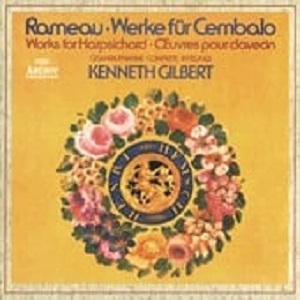
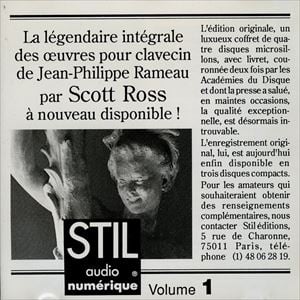
Rameau: The complete works for Clavecin / Kenneth Gilbert / Scott Ross
I like Rameau’s pieces because they have a certain flavor. They may have been composed in the spare time of an opera composition, but their musical value is as good as Couperin’s collection. The melancholic Sequenz of the Allemande in the Third Suite, the nifty compound rhythms of the Courante, and the exhilarating “Enharmonic” are just a few examples. As for records, the first one I bought was Kenneth Gilbert’s. This was a really neat performance and I liked it. After a while, I found Scott Ross’s record at a record shop and was completely fascinated by it. I bought the CD After a long time but it goes without saying that it’s a wonderful performance.
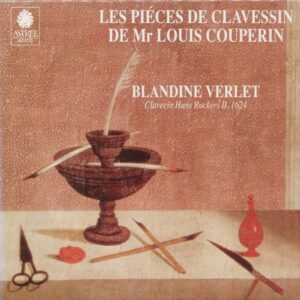
Louis Couperin: The Complete Works for Clavecin / Blandine Verlet
Although Louis Couperin is less often mentioned than his nephew Francois Couperin, he was an important clavecin composer in 17th century France along with Jacques Champion de Chambonniere and Jean-Henri d’Anglebert. He is also known as the composer who established the technique of “prelude non mesure”, which can be seen in the Prelude of Rameau’s First Suite. Compared to the works of Francois Couperin, his style is closer to the language of lute music. I have the complete works of Blandine Verlet on CD, but I also liked the analog version by Alan Curtis that I had a long time ago. There is nothing more graceful than a Clavecin piece from this period played in meantone tuning.

Der Fluyten Lust-Hof / Francois Lazarevich
I ordered this one along with the Bach CD. Here he is playing superbly with various sizes of transverse and vertical flutes. The renaissance flute is one of the most difficult of all instruments to play, but in his hands it seems to be the most obedient.
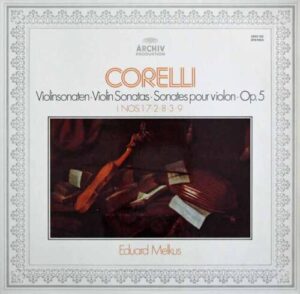
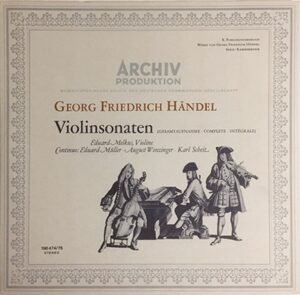
Corelli, Handel Complete Sonatas for Violin / Eduard Melkus
This is a collection of two big composer issued by Alchiv label. This is a rare recording from the early days of original performance. The lute continuo, which was revolutionary at the time, is one of the highlight. This is a performance that can be enjoyed to the fullest, even if it has a few quibbles with modern sensibilities.
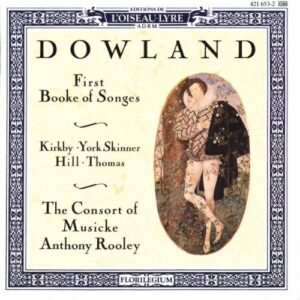
John Dowland Songbooks / The Consort of Music (Anthony Rooley)
I love Dowland. When I feel depressed or want to die, listening to Dowland somehow cheers me up. A long time ago, there was a concert of the Consort of Music at Ishibashi Memorial Hall for four consecutive days. The members were Anthony Rooley, Emma Kirkby, Evelyn Tubb and Mary Nichols. Somehow, I and some of my friends ended up attending the after-party of their concert. It was at a tempura restaurant in Ueno. Mr. Kirkby was not able to attend due to health problems, but two American women were very energetic entertainer and sang Foster’s folk songs.
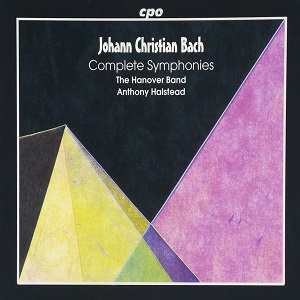
Johann Christian Bach : Complete Symphonies / Hanover Band
Christian Bach’s symphonies are more than Mozart’s in terms of their “perfection” and “inspiration”. In fact, some of the melodies that Mozart borrowed from his works can be found here and there, and I sometimes think, “What?”
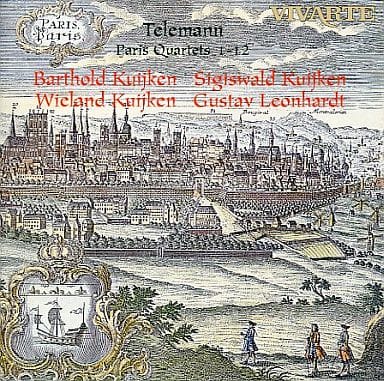
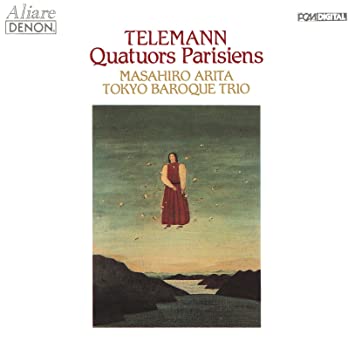

Telemann : Paris Quartet / Kuijken Brothers, Gustav Leonhardt and others
Johann Joachim Quantz, in his book “Versuch einer Anweisung die Flote traversiere zu spielen”, praises these works by Telemann as the norm for quartets and trio sonatas.There are a total of 12 pieces called the Paris Quartet. Six of them are sometimes simply called “quartets”. I have all the pieces on CD by the Kuijken Quartet, all the pieces by Masahiro Arita, Christophe Rousset and others, and six pieces by American Baroque (This disc includes a harp in the continuo). It is an easy repertoire for flute players, and I have played some of them.

Telemann : Trio sonatas / Camerata Koln
Johann Joachim Quantz says in his “Versuch einer Anweisung die Flote traversiere zu spielen” that “The trio must be composed so that it is difficult to infer which of the two upper voices is the true main voice”. Telemann’s Trio Sonatas are works in accordance with this theory of Quantz that makes full use of counterpoint.
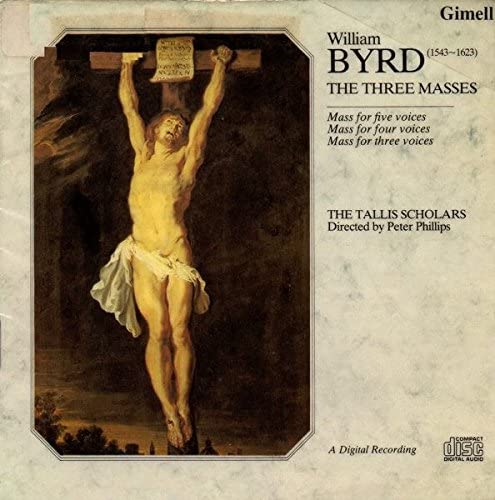
Byrd : Masses for 3, 4, and 5 Voices / Tallis Scholars
Most of Byrd’s religious works are for the Church of England, but he also composed Catholic masses. He himself seems to have been a lifelong Catholic. His Masses for three, four, and five voices are the best of them. This performance by the Tallis Scholars is a masterpiece, filled with pure harmony. Byrd also left many other consort works, songs, keyboard works, and consort songs, which I love.
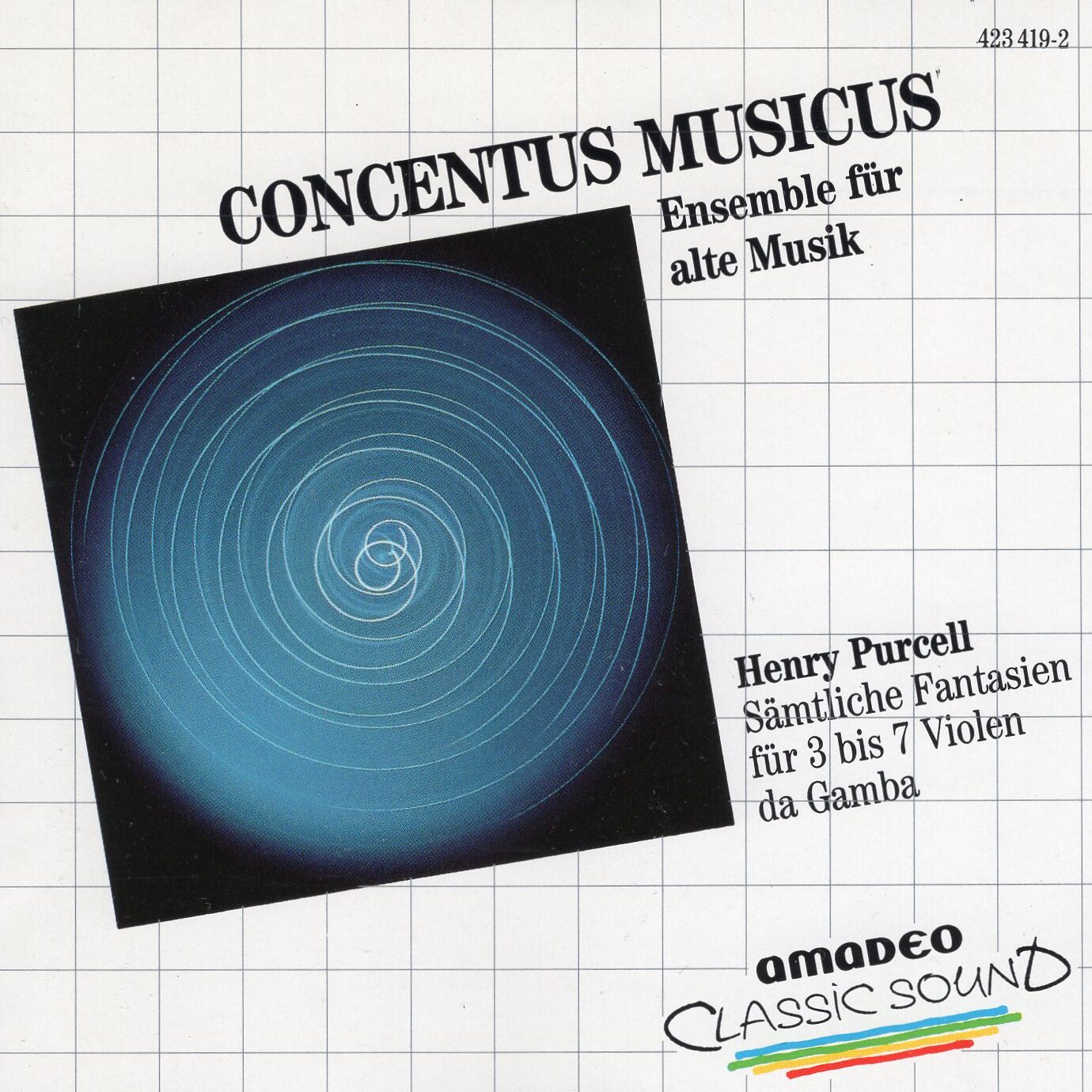
Purcell : Fantasia / Nikolaus Harnoncourt
Although this piece is often played by a viol consort, Harnoncourt plays it on an instrument of the violin family. This piece, written in the style of an era before Purcell’s time, has a profound atmosphere, as if one were walking through a deep forest. There is no doubt that the music of William Byrd is at the root of it. It would be interesting to compare the performance with the viol consort by Jordi Savall.
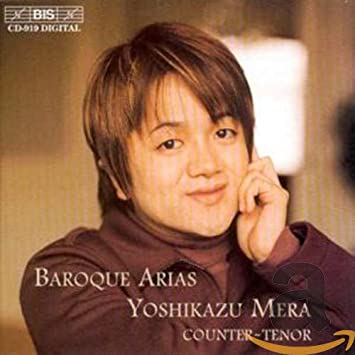
Baroque Arias For Counter-Tenor / Yoshikazu Mera
The first time I heard Yoshikazu Mera perform was at the “Tochigi Kuranomachi Music Festival” when he was just starting out. It was a concert featuring only early Italian Baroque music such as Monteverdi and Caccini, and I couldn’t help but fall in love with his wonderful expressiveness. On this CD, Mera recorded mainly arias by by Bach and other German composers, backed by accompaniment of Bach Collegium Japan. I also have a CD of Mera recording only Japanese songs. These are the valuable recording from his mature period.
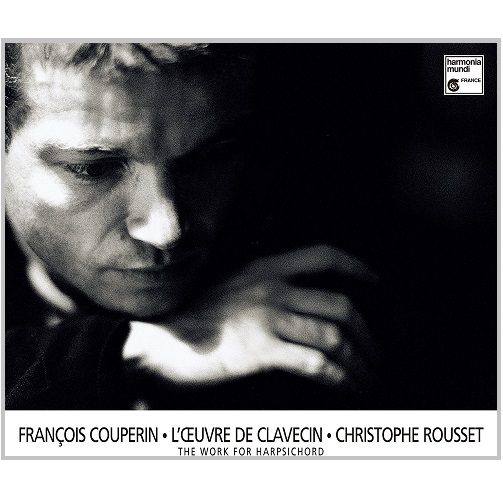
Couperin : The Works For Clavecin / Christophe Rousset
This 10-CD set contains all of Couprin’s clavecin pieces and four “Royal Court Concerts”. The set also includes “L’apotheose De Lully” and “L’apotheose De Corelli” as bonuses. Rousset’s performance of Clavecin is simply wonderful in tone. That’s which is hardly surprising he uses a variety of original instruments, including Joannes Ruckers, Joannes Couchet, and Pascal Taskin, depending on the pieces. In the duet pieces, William Christie also performs with him.
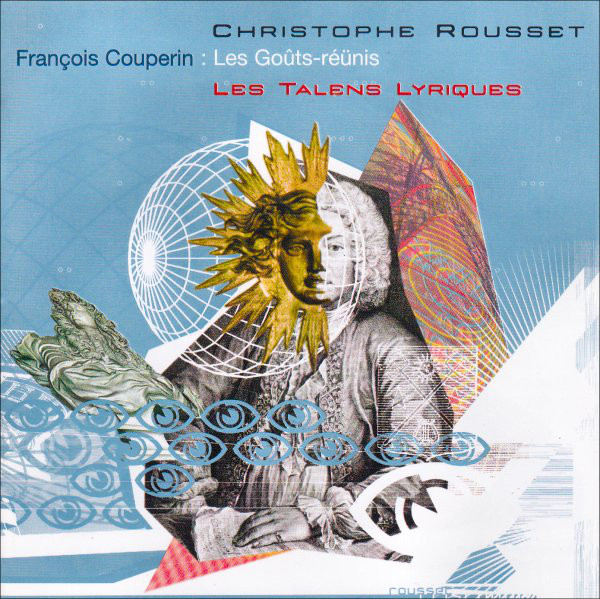
Couperin : Les gouts reunis, ou Nouveaux concerts / Christophe Rousset
This CD include ten so-called the “Nouveaux concerts” by Francois Couperin that follow the four “Concerts Royaux”. The style of the Les Talens Lyriques, playing in various instrumentation or unison, keeps the listener interested.
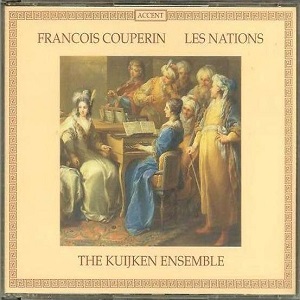
Couperin : Les Nations / Kuijken Ensemble
This is arguably the best performance of this piece by Couperin. There is also recording by Jordi Savall, but I don’t think they come close to this Kuijken’s CD. But for some reason, the Kuijken brothers don’t seem to use theorbo as an accompaniment very often. I think I would love to have a theorbo in French Baroque.
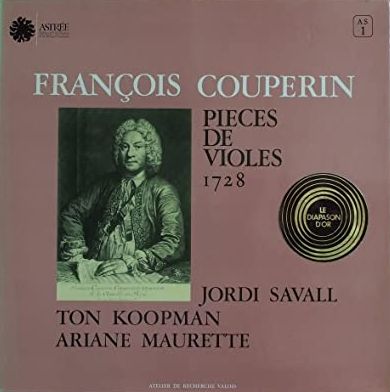
Francois Couperin : Pieces de Violes / Jordi Savall
It is said that one of the goals of a viol player is to be able to play Couperin and Forqueray (and also said Marin Marais wants not so technical). Be that as it may, Couperin’s two suites are indeed gems of work. I still remember how impressed I was when I first heard this record, by Savall and Koopman. I really shiver when I heard the beginning of the Allemande in the first suite (that’s how moved I was). The final movement of the second suite reminds me of Forqueray’s “Jupiter”.
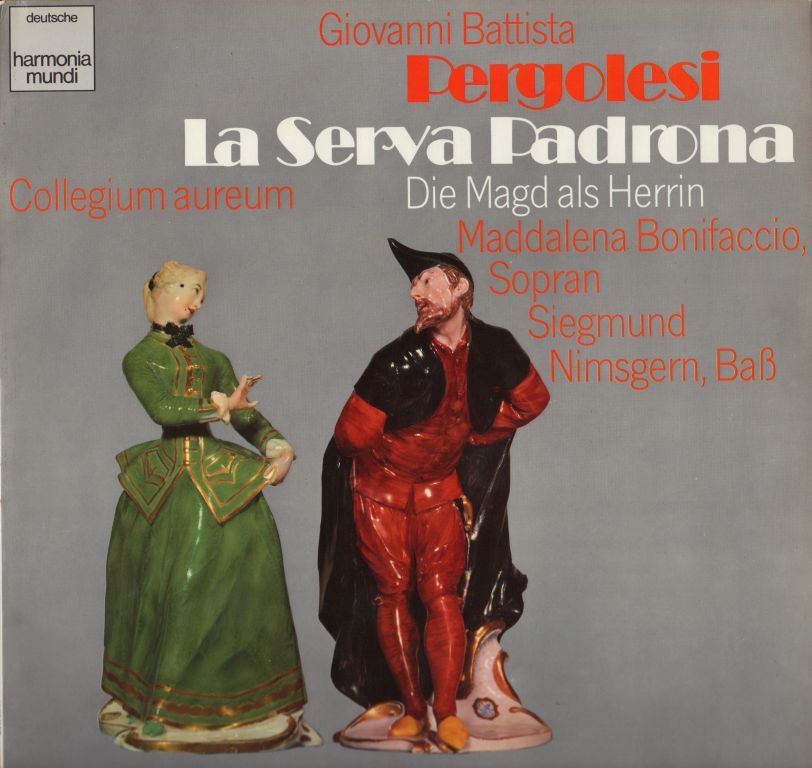
Pergolesi : La serva padrona / Maddalena Bonifaccio, Siegmund Nimsgern
Giovanni Battista Pergolesi, who wrote the famous “Stabat Mater,” wrote this comic opera with the same pen. It is also famous as the opera that caused the famous “Bouffon’s Quarrel” when it was performed in Paris at the time. The melody is very lively and enjoyable. And a fast-paced story doesn’t get bored. Pergolesi has his own unique form of cadence, and in the aria of La serva padrona, there is a phrase that sounds just like “Inflammatus Et Accensus”, the duet of “Stabat Mater”.
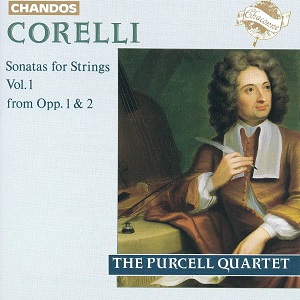
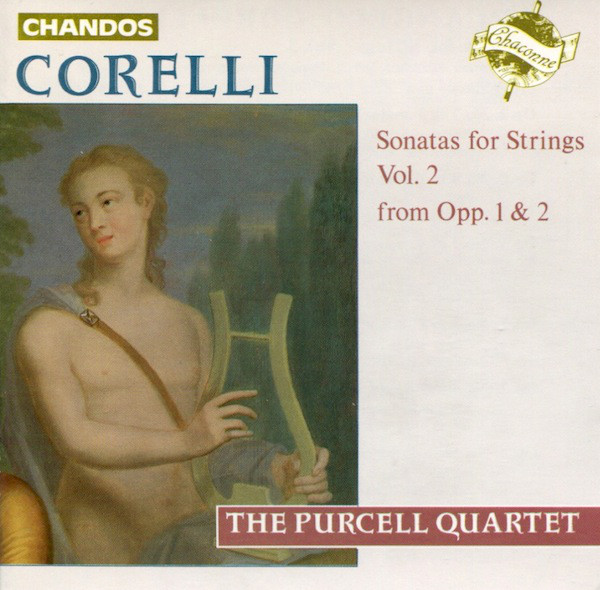


Corelli : Complete Trio Sonatas / Purcell Quartet
During the Baroque era, musicians all over Europe respected and looked up to Arcangelo Corelli as their model composer. Four of his six volumes of works are trio sonatas. The Purcell Quartet has recorded all of them on four CDs. The instrumentation of the basso continuo is varied enough to keep the listener interested.

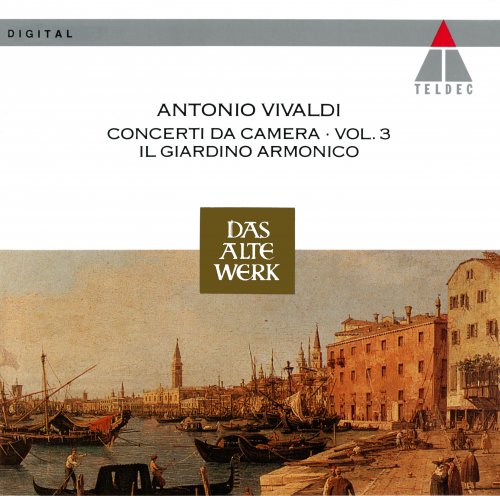
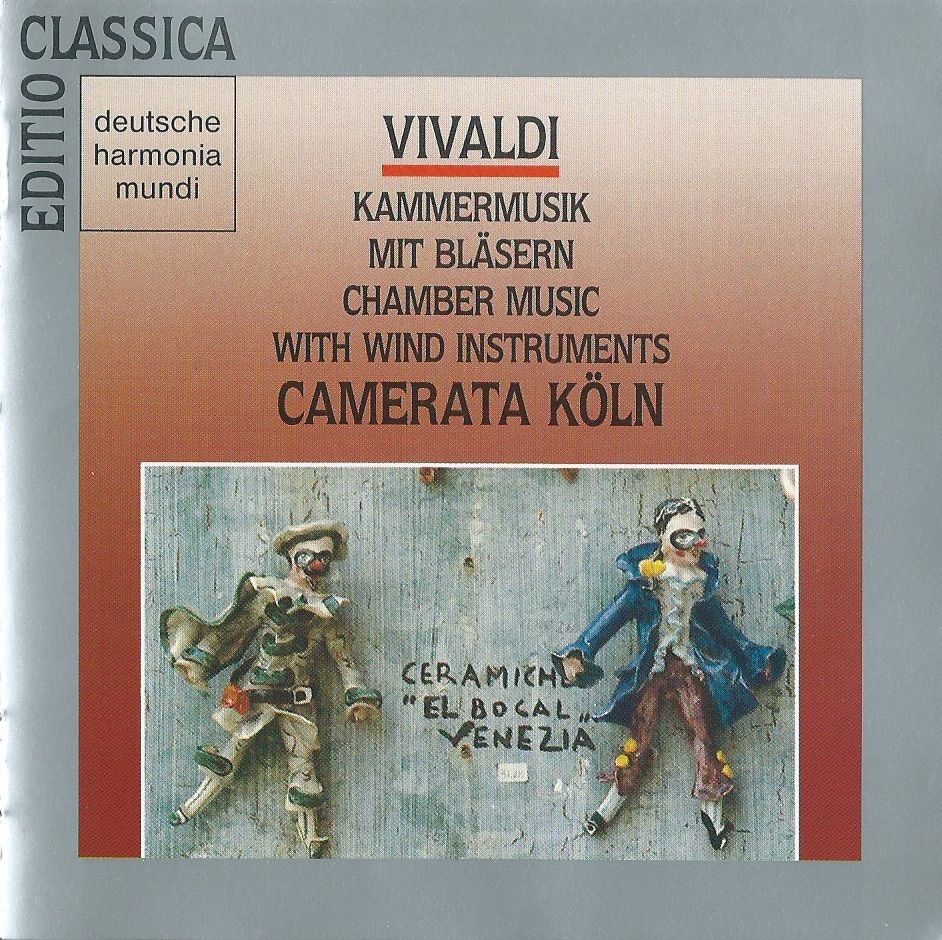

Vivaldi : Chamber Concertos / Il Giardino Armonico, Camerata Koln
Comparing the Vivaldi of the two groups, I think Il Giardino Armonico is more lively and aggressive. On the other hand, the Camerata Koln seems to be more restrained. I prefer the former. However, I am sure that each individual will have a different opinion.
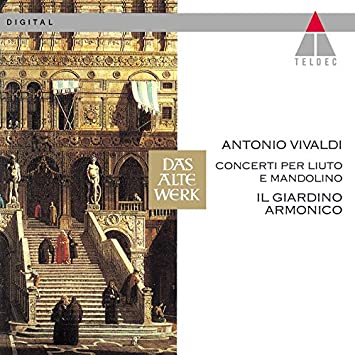
Vivaldi : Concertos for Lute and Mandolin / Il Giardino Armonico
A collection of Vivaldi’s concertos with lute and mandolin as solo instruments. Luca Pianca, The lute player of Il Giardino Armonico, plays an active role in this CD.
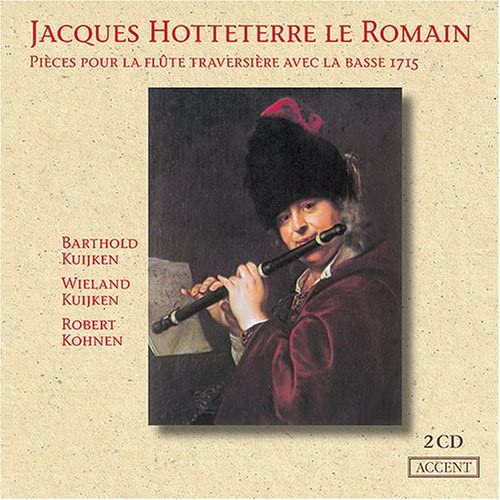
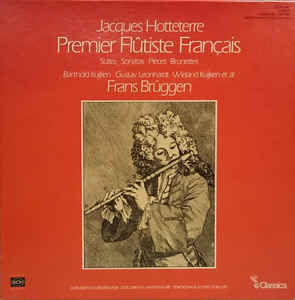
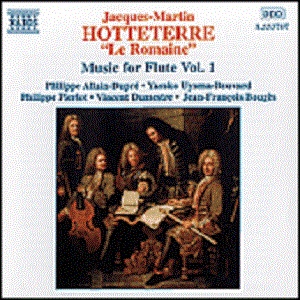

Hotteterre : Pieces pour la Flute Traversiere / Barthold Kuijken etc.
This is a collection of Jacques-Martin Hotteterre Le Romain’s flute works, a gateway for traverso players. I have a variety of analog and CD recordings of Hotteterre’s flute works, but the first one is the Seon recording, which features Barthold Kuijken’s traverso on Frans Bruggen’s recorder and Bruce Haynes’ oboe. At the beginning of each suite, Musette’s solo pieces, unaccompanied flute pieces, and Lambert’s Airs de Cour are interspersed to create a rich variety. The next recording was made by the Kuijken brothers (Bart and Wieland) and Robert Kohnen. It contains all the pieces for flute and bass. The third is a Naxos recording by Philippe Alain Dupre and others. This group includes a theorbo as a basso continuo. The fourth CD I would like to mention is Hotteterre’s piece in Masahiro Arita’s “Flute Music Of The Grand Siecle”. This performance also uses theorbo, and the performer is Yasunori Imamura.

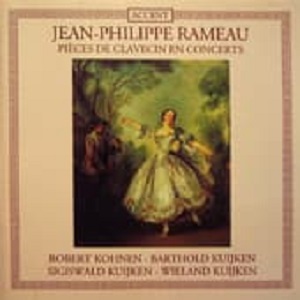
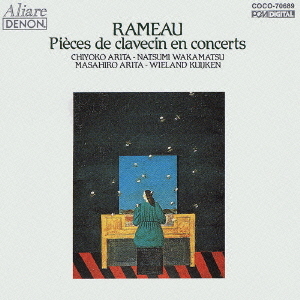
Rameau : Pieces de Clavecin in Concerts / Robert Kohnen and the Kuijken brothers etc.
The first time I heard this wonderful work was on an analog record by the Paris Baroque Ensemble with Veyron Lacroix, Jean-Pierre Rampal and the others. I remember how impressed I was with the first concert “La Livri”. The best CD I have ever heard is the one by Robert Kohnen and the Kuijken brothers. I also have a CD of Chiyoko Arita on harpsichord with Wieland Kuijken and the others.

Leclair : Complete Flute Sonatas / Barthold Kuijken
Jean-Marie Leclair was a French violinist and composer. He went to Italy as a child to study with Corelli. In 1723 he went to Paris to participate in the “Concert Spirituel” with Michel Blavet and others. He composed many violin concertos, violin sonatas, trio sonatas, duets, etc. Some of his violin sonatas can be played on the flute. They are performed in their entirety by Barthold Kuijken on this CD. Although Leclair was a French musician, he composed in the Italian style like Michel Blavet. In his later years, he lived in a favela and met a tragic end when he was stabbed to death by someone.
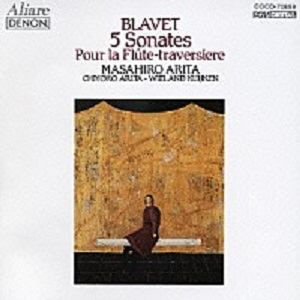
Blavet : Flute Sonatas / Masahiro Arita
The performer, Arita, is such a devotee of Michel Blavet that he regards him as his “spiritual teacher”. In reality, Blavet was not only a brilliant performer but also a man of character who was respected by those around him. In his autobiography, Quantz praised Blavet’s performance in Paris, and in his book, “Versuch einer Anweisung die Flote traversiere zu spielen”, he wrote that Blavet was one of the best flutists along with Dresden’s Pierre-Gabriel Buffardin. Telemann wrote the famous “Paris Quartet” for the musicians of the “Concert Spirituel” in Paris, including Blavet.

Le Parnasse Francais -French Baroque Works / Musica Antiqua Koln
This is an analog record containing works by Marais, Couperin, Leclair, and Rebel. Musica Antiqua Koln attracted attention as one of the most avant-garde performance groups at the time, but it seems to have disbanded in 2007. In this record the first piece, Marin Murray’s “The Bells of Saint Genevieve”, is very impressive after all.

Devil’s Trill and others / Eduard Melkus
This is a collection of violin sonatas by Vitali, Tartini, and Nardini. Vitali’s Chaconne is written by the exact same basso ostenato as the final piece of Biber’s Rosary Sonata. This type of music was also popular in France, and Lambert’s Air de Coeur is almost entirely based on this bassline. Tartini’s “Devil’s Trill” is known for its well-crafted episodes, but it is a piece that requires so-called “superb technique”. A lot of difficult trills are used in the fast sixteenth notes of the second movement. But unfortunately, they are not “devil’s trills”. The real “Devil’s Trill” appears in the third movement when the Andante changes to Allegro assai. This is a nearly impossible part where you have to play the trill with your two fingers of left hand while playing the melody line with the rest of your fingers.”Theme and 30 Variations” is based on Corelli’s gavotte and titled “L’Arte Dell’ Arco (Bowing Technique)”. He is also the discoverer of the “difference tone (tartini tone),” which I explained here before. In Nardini’s piece, Melkus attempts a brilliant and harmonious variation.
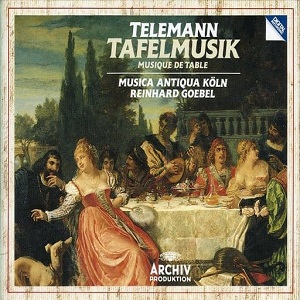
Telemann: Tafelmusik / Musica Antiqua Koln
This is a collection of three cycles: French overture – quartet – concerto – trio – solo – finale. The top solo part of the second quartet in D minor is overwhelmingly played by recorders, but I prefer it played by bassoons. Other works in the traverso player’s repertoire include the Quartet in G major, the Solo Sonata in B minor, the Trio Sonatas in E minor and D major, the Overture in E minor, and the Concerto in A major. All of them are written in a very easy to play style and are popular among amateur traverso players.

Telemann: Der getreue Musik-meister / Camerata Koln
There are magazines that come with plastic model parts as a supplement every time, and the first issue is very inexpensive, but the second and subsequent issues are quite expensive. Telemann’s “Der getreue Musik-meister” was a magazine like that. Every two weeks, the magazine would send out sheet music, but this time only the first movement of a sonata, the second movement would be sent out next time, and so on, to keep subscribers getting away. Like this it seems that Telemann was a man of great business acumen. However, because of this, it is very difficult to read the scores because the same piece is on different pages. There are also quite a few contributions by other composers, but some of them do not seem to have the composer’s name written on them.


Telemann: 12 Sonate Metodiche / Frans Bruggen and others
I have two different recordings of this piece. The first is a CD with the flute and voice flute of Frans Bruggen, the violin of Daniel Stepner, the oboe of Han de Vries, and the basso continuo of Annner Bylsma, Gustav Leonhardt, and others (Seon label). There is also a CD with Barthold Kuijken’s flute and Wieland Kuijken and Robert Konen’s basso continuo (Accent label).
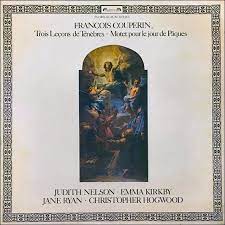
Couperin : “lecon de tenebres” and others / Judith Nelson, Emma Kirkby
This is one of the most moving religious songs written by Couperin. However, I feel that the singing of Nelson and Kirkby is not so suitable for French songs. Of course, that’s just my opinion. On the other hand, I think the performance by Montserrat Figueras in the movie “Tousles Matinsdu Monde” is the best I have ever heard. It is a pity that only the third lecon is included on the soundtrack disc.

French Chamber Music of the 18th Century / Hotteterre Ensemble
This is their debut album. I remember the moment I first dropped the needle on the record, I felt a shiver run through my body. Their ensemble was controlled to perfection. When I think about it now, I feel that they were the first to use wind instrument unison as a means of expression proactive. Unfortunately, they were also a short-lived ensemble. They released only one more album after this album, a collection of Telemann’s music on the Alchiv label, and then effectively disbanded. Since then, each member has been active as a soloist, and the group has not played together again. Two of the group members have passed away, and only Masahiro Arita, Chiyoko Arita, and Kazuo Hanaoka are still active today.
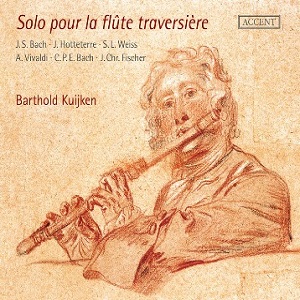
Flute Recital / Barthold Kuijken
This is a collection of mainly an unaccompanied partita by the Johann Sebastian Bach and an unaccompanied sonata by Emanuel Bach, arias and brunettes by Hotteterre, a suite by Silvius Leopold Weiss arranged by Barthold himself, and Vivaldi’s “Spring” by Jean-Jacques Rousseau. In particular, the pieces by Bach and his son have bold improvizations (variations) on the second repetitions, and the listener is taken aback by their sheer skill. Prior to the release of this CD, I listened to a solo concert by Bart at a church in Harajuku with almost the same program as this recording. I can still vividly recall the dreamy feeling I had at that time.
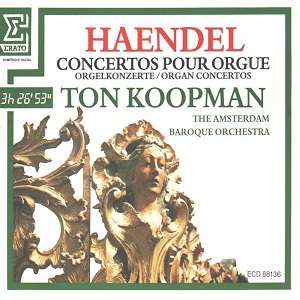
Handel: Complete Organ Concertos / Ton Koopman conducting and organ
The difference between Handel’s organ concerto and Bach’s is that in the case of Handel, it was a pure concert piece played between the acts of an oratorio, whereas in the case of Bach, it was an arrangement based on someone else’s work for the purpose of practicing composition. I have not listened to many other recordings of this work, but this CD by Koopman is probably one of the best ones. In addition CD by Lorenzo Ghielmi is also very good and it’s my favorite.

Carl Philipp Emanuel Bach : Flute Concertos / Konrad Hunteler, Ton Koopman conducting
I believe that Hunteler was the first person to record the complete flute concertos of Emanuel Bach with traverso. As I found out when I checked on the Internet, no one has accomplished this feat since then. This is a group of works that are in the taste of so-called “Sturm und Drang”. At the same time, they are quite difficult to play. Would Friedrich II have been able to play these pieces?

Carl Philipp Emanuel Bach : Complete Flute Sonatas / Barthold Kuijken, Bob van Asperen
The flute and obbligato harpsichord sonatas in E-flat major and G minor, conventionally considered to be works of Johann Sebastian Bach, are included on this CD. However, the sonatas for flute and basso continuo are not included. Therefore, it would be more correct to call this CD “Sonatas for Flute and Obbligato Harpsichord” rather than “Sonatas for Flute”.

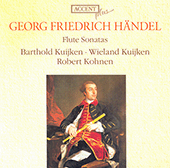
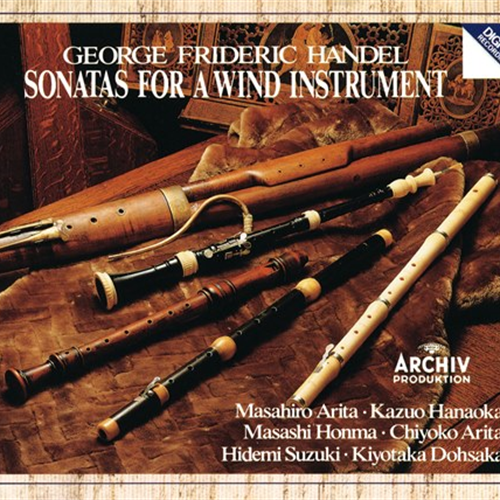
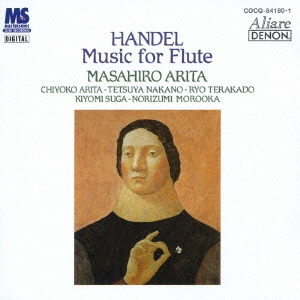

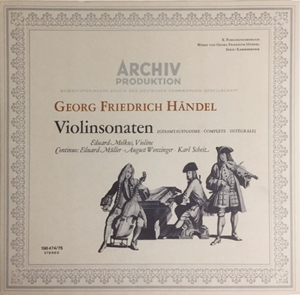

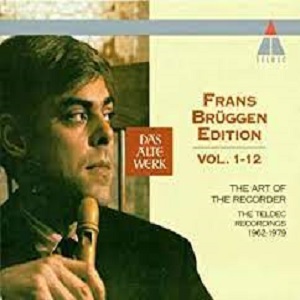
Handel : Solo Sonatas (Op.1) / Frans Bruggen, Barthold Kuijken, Masahiro Arita, etc.
I have a number of discs of this as well. The first one is an analog disc by Frans Bruggen, Bruce Haynes and others. Bruggen played the traverso and recorder, which Recording is not very good. The volume level of the traverso is lower than that of the recorder. I don’t know why, but it seems to be recorded with an off-microphone. Also, Bruggen recorded seven of Handel’s recorder works long before this recording, probably in the 1960s, and his performance at that time had a fine vibrato. It is interesting to see how his playing has changed. Next, I bought a complete collection of wind sonatas by the members of the Hotteterre Ensemble. And a complete collection of flute works only by Masahiro Arita too. I also bought a complete collection of flute works by Carl Kaiser of Camerata Koln. And the best of all, the complete flute sonatas by Barthold Kuijken (there had never and will never be anything better). As for the complete violin sonatas, I have the discs by Eduard Melkus and Ryo Terakado. In addition, “The Art of the Recorder”, a collection of 12 CDs by Frans Bruggen, is available from Das Alte Werk, and is a valuable collection of his recordings from 1962 to 1979, a compilation (or worse, a mishmash).

